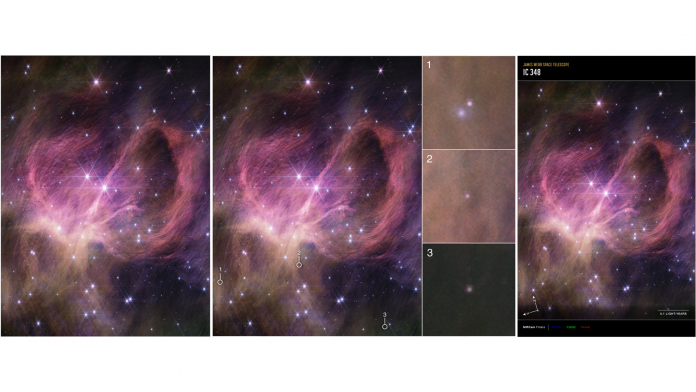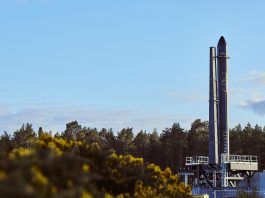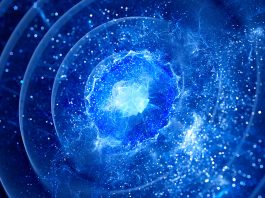Astronomers have identified a tiny, free-floating brown dwarf when determining the smallest object that can form in a star-like manner.
Using NASA’s James Webb Space Telescope, astronomers have identified the smallest object that can form in a star-like manner – a free-floating brown dwarf with only three to four times the mass of Jupiter.
“One basic question you’ll find in every astronomy textbook is, what are the smallest stars? That’s what we’re trying to answer,” explained lead author Kevin Luhman of Pennsylvania State University.
The results were published in the Astronomical Journal.
What is a brown dwarf?
Brown dwarfs are objects that lie between stars and planets. They form in a similar way to stars, growing dense enough to collapse under their own gravity.
However, they never become dense and hot enough to begin fusing hydrogen to become a star.
Some brown dwarfs fall at the low end of the scale and are comparable with giant planets. At this size, they weigh just a few times the mass of Jupiter.
Identifying the smallest brown dwarf
To discover the brown dwarf, the team studied the star cluster IC 348 – located around 1,000 light-years away in the Perseus star-forming region. The cluster is only around five million years old.
As the cluster is young, any brown dwarfs would still be bright in infrared light, glowing from the heat of their formation.
Using Webb’s NIRCam, the team first imaged the centre of the cluster to identify brown dwarf candidates based on their brightness and colour. The most promising targets were followed up using Webb’s NIRSpec microshutter array.
Webb’s sensitivity to infrared allowed the team to identify fainter objects than ground-based telescopes. The telescope’s sharp vision also helped determine which red objects were pinpoint brown dwarfs compared to blobby background galaxies.
The process led the team to identify three targets, weighing three to eight Jupiter masses, with surface temperatures between 1,500 to 2,800°F.
According to computer models, the smallest brown dwarf weighs three to four times Jupiter.
How does the star formation process operate with small masses?
It is theoretically challenging to explain how such a small brown dwarf could form. A heavy and dense cloud of gas has plenty of gravity to collapse to form a star.
However, it should be more difficult for a small cloud to collapse to form a brown dwarf because of its weaker gravity. This is especially true for brown dwarfs with the mass of giant planets.
“It’s pretty easy for current models to make giant planets in a disk around a star,” said Catarina Alves de Oliveira of ESA (European Space Agency), principal investigator on the observing programme.
“But in this cluster, it would be unlikely this object formed in a disk, instead forming like a star, and three Jupiter masses is 300 times smaller than our Sun. So we have to ask, how does the star formation process operate at such very, very small masses?”
The first time the molecule has been detected outside the solar system
Tiny brown dwarfs can help astronomers better understand exoplanets, as the smallest of them overlap with the largest exoplanets. It is, therefore, expected that they would have similar properties.
However, a free-floating brown dwarf is easier to study than a giant exoplanet because the latter is hidden by the glare of its host star.
In the survey, two of the brown dwarfs discovered have the spectral signature of an unidentified hydrocarbon containing both hydrogen and carbon atoms. This infrared signature was also detected by NASA’s Cassini mission in the atmosphere of Saturn and in the interstellar medium.
“This is the first time we’ve detected this molecule in the atmosphere of an object outside our solar system,” explained Alves de Oliveira.
“Models for brown dwarf atmospheres don’t predict its existence. We’re looking at objects with younger ages and lower masses than we ever have before, and we’re seeing something new and unexpected.”
The possibility of the objects being rogue planets
As the objects are within the mass range of giant planets, it raises the question of whether they are brown dwarfs or rogue planets ejected from planetary systems. Although the team cannot rule out the rogue planet theory, they believe that it is more likely that the objects are brown dwarfs.
An ejected giant planet is unlikely for two reasons. First, compared to planets with smaller masses, such planets are uncommon in general. Second, most stars are low-mass and giant planets are rare among those stars.
Because of this, it is unlikely that the stars in the cluster can produce massive planets. As the cluster is young, there potentially hasn’t been enough time for giant planets to form and then be ejected.
Future work
The discovery of similar objects will help clarify their status. It is likely that rogue planets will be found on the outskirts of a star cluster, so in future, the search area should be expanded to find out if they exist within the cluster.
The team also may conduct long surveys that can detect fainter and smaller objects in the future.









